The Great Wall

Most human communities are encircled by a culturally-built wall that marks off those who have value in themselves from the outsiders who don’t. According to historian of religion Mircea Eliade, at early levels of human development, the tribe or ethnic group is likely to be seen as the whole moral community, the center of the world. Outside of it is the realm of threatening chaos, to be either shunned, or fought and overcome. At later stages, the wall encloses the privileged race or nation. There are also usually various inner walls, maintaining degrees of value inside the circle. These cultural walls are created by human beings. Some of the inner ones, when understood to be human-made, provide necessary structure to society. But when a wall, especially the Great Wall, is thought to be beyond question, it makes for a cosy prison surrounded by a no-man's-land. Walls have great power and influence, shaping their human shapers.
But, as sociologist of religion Peter Berger points out, they require regular maintenance (like the stone wall in Robert Frost's well-known poem). Individuals sometimes forget them, or seem unable to comprehend them in the first place. Children question them, and have "got to be taught / To be afraid / Of people whose eyes / Are oddly made, /And people whose skin / Is a different shade. . . . " Philosophers question them. Prophets challenge them, arousing anxiety among their hearers.
Because of the Quaker affirmation of the reality of the Inner Light in all, and thus our testimony of Equality, Friends have consistently been committed to including all human beings within the Great Circle of those who have value. Of course, many other individuals and communities with strong spiritual and moral convictions share this commitment. Though we seldom fully live up to our testimonies, we hold that no one should be exploited, or subject to the violence that enforces exploitative systems. But most people of religious and moral convictions, including Friends, have assumed that animals are on the other side of the Wall, the realm of chaos and darkness, of creatures that, uncontrolled, are red in tooth and claw. Kindness to these four-legged outsiders is laudable, but justice is limited to the two-legged and many-worded, those who look like us. Keeping animals against their will as property is not slavery; killing them for food or other reasons of human convenience is not considered to be violence despite the obvious fact that it is bloodshed. Because of the wall, otherwise compassionate people can look at this violence and simply not see it.
The Challenge to the Wall
The focal issue of the Animal Rights/ animal defense movement is to present the challenge to this wall that prophetic thinkers and activists have been making, especially in the last thirty years. Their message is that as a moral boundary, the wall is as imaginary as those previously believed to separate tribes, classes, genders, nations, or races. The reality is not a neat, clear situation of who may own or eat whom--humans vs. animals--but an untidy scene of gradation. We humans are much closer to cows in consciousness and behavior than cows are to clams.
What, after all, is it that makes human beings thought to be the sole bearers of intrinsic value, distinguishing us as the only proper inhabitants of the charmed circle? One traditional answer is rationality; "we" think and talk, whereas "they" can't; we know, and we know that we know. Another answer is that humans are made in the image of God, or possess a soul: "God formed man from the dust of the earth, and breathed into his nostrils the breath of life; and man became a living soul (nepesh)." Our aliveness is derived from the Divine Breath/Spirit; thus we have the capacity to be united with God our Source. The language of Friends regarding this central issue of identity is derived from the Biblical terms: the "Inner Light" borne by all persons is often used interchangeably with "Spirit."
These terms are variously defined, or left vague, but an element common to most conceptions of the terms is consciousness, awareness, that which differentiates a living body from a dead one. God is the living God; we are alive with life from God. The words certainly refer to something real. But unfortunately for those who depend on the biblical "soul" to differentiate humans from animals, the same Hebrew word, nepesh, is also applied to animals in the text. (Uncomfortable translators usually choose a different term, such as "creature," to mask this identity.) There is no question but that animals have consciousness, and some of them show definite signs of being self-conscious, of "knowing that they know." (See Reflecting Elephants, PT Issue 26 (Nov. 2006) They too are alive with That of the divine Life.
In, under, and with the traditional theological answer to the identity question is another, the conviction that "we" have a capacity for love and empathy, whereas "they" operate out of instinct. But the term "instinct" is so vague that often it is little more than a handle to denigrate animal consciousness with its urges, feelings, and skills. All too often, the exaltation of human beings at the expense of animals arises out of ignorance of many of "them."
 However the identifying characteristic of the "insiders" is understood, probably the main reason why animal defenders have challenged the wall, claiming it to be full of holes, is what philosophers call "borderline cases." The boundary is not as clear-cut as is usually assumed. Some human beings are born so defective mentally that they will never speak. Some are so defective spiritually that they show no sign of love, and even commit appalling crimes without any detectable twinge of conscience. Yet we are right to affirm that they still derive from the divine Breath, bear the Inner Light. On the other hand, close attention, both informal and scientific, to animals has shown that many bond together in deep attachments, sometimes for life; some are capable of altruistic actions toward other animals and humans. In humans this would be called love; it is only the human-built wall that authorizes us to demean these actions as "instinctive." Well-known studies of chimpanzees and gorillas show that they can acquire vocabularies in the hundreds or thousands of words in sign language. Animals have central nervous systems; they dream; they communicate by sounds and gestures; they suffer; they enjoy. When we perceive that the wall was not created by God or Natural Law, but by human beings, there is a sudden perception that to harm or destroy the bodies of creatures of these capacities, especially for the sake of our pleasure or convenience, is real violence. It is not on the same level as killing germs.
However the identifying characteristic of the "insiders" is understood, probably the main reason why animal defenders have challenged the wall, claiming it to be full of holes, is what philosophers call "borderline cases." The boundary is not as clear-cut as is usually assumed. Some human beings are born so defective mentally that they will never speak. Some are so defective spiritually that they show no sign of love, and even commit appalling crimes without any detectable twinge of conscience. Yet we are right to affirm that they still derive from the divine Breath, bear the Inner Light. On the other hand, close attention, both informal and scientific, to animals has shown that many bond together in deep attachments, sometimes for life; some are capable of altruistic actions toward other animals and humans. In humans this would be called love; it is only the human-built wall that authorizes us to demean these actions as "instinctive." Well-known studies of chimpanzees and gorillas show that they can acquire vocabularies in the hundreds or thousands of words in sign language. Animals have central nervous systems; they dream; they communicate by sounds and gestures; they suffer; they enjoy. When we perceive that the wall was not created by God or Natural Law, but by human beings, there is a sudden perception that to harm or destroy the bodies of creatures of these capacities, especially for the sake of our pleasure or convenience, is real violence. It is not on the same level as killing germs.
One Response to the Challenge
In many cases, people (including people of faith) who resist the challenge presented by animal defenders insist that whether or not one eats "meat" is a personal decision, and insist that their liberties ought not to be infringed by the tyranny of vegetarians. (This is hardly a new point; John Calvin made it 400-plus years ago.) This argument, which seems convincing to many who have given the issue little thought, still takes the wall for granted rather than defending it.
But once the challenge has been made, it cannot responsibly be ignored. Those who intend to continue eating the flesh of animals cannot be allowed to take the wall for granted. They must show that human animals are morally different from our furry and feathered cousins, not merely different in body shape or degree of mental capacity. Demonstrating this is not so easily done.
Of course the issue is much more than a matter of logical argument; strong feelings on both sides are involved. Suppose a congregation should suddenly learn that the "meat" they had been eating in their monthly potluck came not from animals but from severely mentally defective human beings, namely, borderline cases. Although the victims may in fact have had a more restricted consciousness than normal cows or pigs, the diners would all feel sick and horrified. No one would think that whether or not they ate it should be a matter of individual choice.
 Such a scenario might help meat-eaters to understand the feelings of Friends and other vegetarians of faith who have long come to regard the wall as imaginary. To be present when our friends are eating animals capable of love, animals who lived in misery and were killed in fear and pain, does not cause mere discomfort; it causes a grief so deep as to eclipse the joys of fellowship with fellow-worshippers, though they remain bone of our bone and flesh of our flesh.
Such a scenario might help meat-eaters to understand the feelings of Friends and other vegetarians of faith who have long come to regard the wall as imaginary. To be present when our friends are eating animals capable of love, animals who lived in misery and were killed in fear and pain, does not cause mere discomfort; it causes a grief so deep as to eclipse the joys of fellowship with fellow-worshippers, though they remain bone of our bone and flesh of our flesh.
It is important that in dealing with the painful divisions that this issue opens within our spiritual communities that we keep turning to the Divine Spirit, and make strong efforts when we speak to be both accurate and loving. It is possible, though not easy, to condemn cultural constructs without condemning persons, and this we must continually strive to do. Those who disagree must be encouraged to labor in the same way.
--Gracia Fay Ellwood

 Nine volunteers agreed to be locked in an English zoo for 12 days, eating the same food as the apes: water, honey, and a variety of raw fruits, vegetables and nuts. They set up home in a tented enclosure at Paignton Zoo, Devon, next to the ape house, in an experiment filmed for TV. The idea, says Jill Fullerton-Smith, who helped organise the trial, was that modern diets, often dominated by processed foods and saturated fats, cause costly health problems.
Nine volunteers agreed to be locked in an English zoo for 12 days, eating the same food as the apes: water, honey, and a variety of raw fruits, vegetables and nuts. They set up home in a tented enclosure at Paignton Zoo, Devon, next to the ape house, in an experiment filmed for TV. The idea, says Jill Fullerton-Smith, who helped organise the trial, was that modern diets, often dominated by processed foods and saturated fats, cause costly health problems.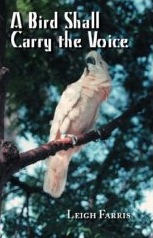 In this book the author describes the experiences she had living with a cockatoo (Kakatoe moluccensis) who was at first believed to be a male, and named Maximilian. Two veterinarians examined her without realizing that she was really female; her sex was only discovered when she started laying (unfertilized) eggs. Then her name was changed to Beaka.
In this book the author describes the experiences she had living with a cockatoo (Kakatoe moluccensis) who was at first believed to be a male, and named Maximilian. Two veterinarians examined her without realizing that she was really female; her sex was only discovered when she started laying (unfertilized) eggs. Then her name was changed to Beaka. 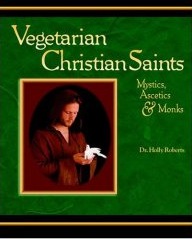 Christian vegetarian saints? Many contemporary vegetarians in the Christian west, associating the peaceable diet with Eastern religion and all too familiar with the hunting and eating habits of their Christian neighbors, might almost wonder if such a thing is possible. They have perhaps heard of St. Francis of Assisi and his legendary love of animals (though even he, out of charity to donors, may not have always been strictly vegetarian). But beyond that, Christendom may seem more a world of dominion and of the dominated/eaten.
Christian vegetarian saints? Many contemporary vegetarians in the Christian west, associating the peaceable diet with Eastern religion and all too familiar with the hunting and eating habits of their Christian neighbors, might almost wonder if such a thing is possible. They have perhaps heard of St. Francis of Assisi and his legendary love of animals (though even he, out of charity to donors, may not have always been strictly vegetarian). But beyond that, Christendom may seem more a world of dominion and of the dominated/eaten.
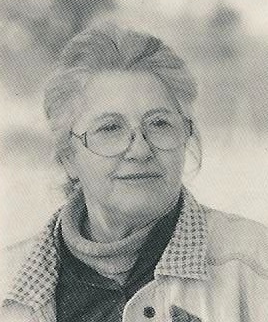 John Woolman led me into Quakerism with his Journal account of thoughtlessly – in his childhood - killing a mother bird. Soon realizing that he had sentenced her nestlings to starvation, he forced himself to kill them all. He told at some length of how this experience haunted him.
John Woolman led me into Quakerism with his Journal account of thoughtlessly – in his childhood - killing a mother bird. Soon realizing that he had sentenced her nestlings to starvation, he forced himself to kill them all. He told at some length of how this experience haunted him.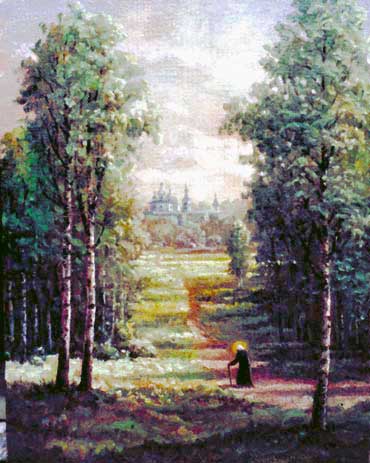 This beloved Russian Orthodox saint, originally named Prochor Moshnin, was born to a middle-class couple in the small city of Kursk in 1759. He seems to have experienced visions and paranormal events from his childhood; for example, a serious illness at age 10 was ended quickly when the boy saw a vision of the Virgin, and shortly thereafter came into contact with a much-venerated icon. When his father died at about the same time, his devout and capable mother carried on the family construction business.
This beloved Russian Orthodox saint, originally named Prochor Moshnin, was born to a middle-class couple in the small city of Kursk in 1759. He seems to have experienced visions and paranormal events from his childhood; for example, a serious illness at age 10 was ended quickly when the boy saw a vision of the Virgin, and shortly thereafter came into contact with a much-venerated icon. When his father died at about the same time, his devout and capable mother carried on the family construction business. 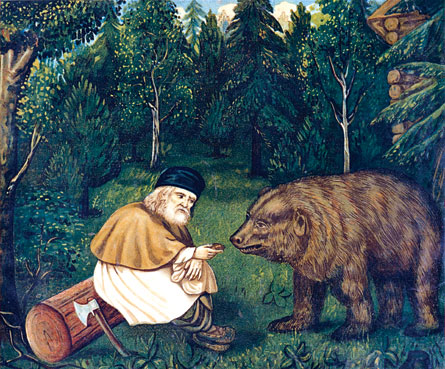

 Brought down to this blue Earth
Brought down to this blue Earth